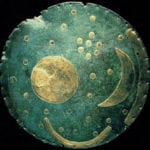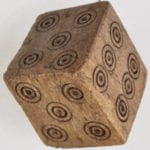 Creepy
Creepy  Creepy
Creepy  Technology
Technology 10 Scientific Breakthroughs of 2025 That’ll Change Everything
 Our World
Our World 10 Ways Icelandic Culture Makes Other Countries Look Boring
 Misconceptions
Misconceptions 10 Common Misconceptions About the Victorian Era
 Mysteries
Mysteries 10 Strange Unexplained Mysteries of 2025
 Miscellaneous
Miscellaneous 10 of History’s Most Bell-Ringing Finishing Moves
 History
History 10 Great Escapes That Ended Right Back in Captivity
 Weird Stuff
Weird Stuff 10 Fascinating Things You Might Not Know About Spiders
 Food
Food 10 Everyday Foods You Didn’t Know Were Invented by the U.S. Military
 History
History 10 Odd Things Colonial Americans Kept at Home
 Creepy
Creepy 10 More Representations of Death from Myth, Legend, and Folktale
 Technology
Technology 10 Scientific Breakthroughs of 2025 That’ll Change Everything
 Our World
Our World 10 Ways Icelandic Culture Makes Other Countries Look Boring
Who's Behind Listverse?

Jamie Frater
Head Editor
Jamie founded Listverse due to an insatiable desire to share fascinating, obscure, and bizarre facts. He has been a guest speaker on numerous national radio and television stations and is a five time published author.
More About Us Misconceptions
Misconceptions 10 Common Misconceptions About the Victorian Era
 Mysteries
Mysteries 10 Strange Unexplained Mysteries of 2025
 Miscellaneous
Miscellaneous 10 of History’s Most Bell-Ringing Finishing Moves
 History
History 10 Great Escapes That Ended Right Back in Captivity
 Weird Stuff
Weird Stuff 10 Fascinating Things You Might Not Know About Spiders
 Food
Food 10 Everyday Foods You Didn’t Know Were Invented by the U.S. Military
 History
History 10 Odd Things Colonial Americans Kept at Home
10 Authentic Historical Artifacts No One Can Explain
The world is full of bizarre and mysterious artifacts. While many of them are almost certainly hoaxes or have improbable theories attached to them, many more are truly mysterious or have outlandish histories.
It’s a shame that the same dubious artifacts get the lion’s share of attention on the Internet when there are so many true mysteries out there. Even some of the better-known artifacts have mysteries or bizarre features attached to them that are far more interesting than “aliens did it” or “Atlantis.”
10The King List
Sumer
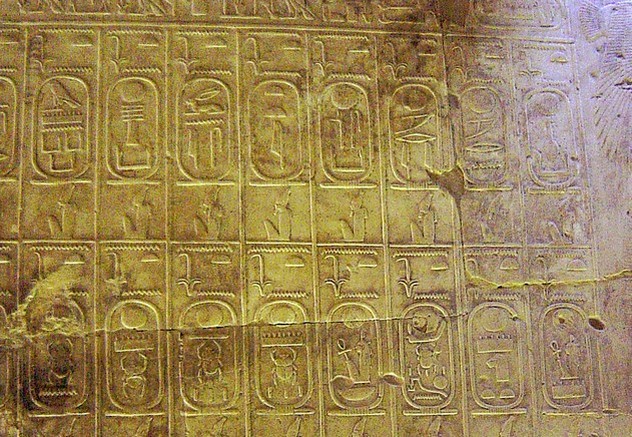
The King List is an account of kingships stretching into the prehistory of the Sumerian people. About 18 nonidentical fragmentary versions of these stone cuneiform artifacts have been found, the most comprehensive of which is the Weld-Blundell prism in the Ashmolean Museum in Oxford. Researchers initially thought that they were straightforward historical documents, but as more complete versions came to light, it became obvious that many of the kings were either wholly or partially mythological. Rulers that should have been there were sometimes omitted. Others had implausibly long reigns or had mythical accounts attached to them or to the time of their reigns, such as the Sumerian account of a great flood and accounts of the exploits of Gilgamesh.
The question is: Why were the Sumerians so careful to document a line of kings while at the same time slipping in references that they had to know were mythological? This would seem to undermine the historical purpose of the document. One possible answer lies in the early history of Sumer. Cities such as Kish, Ur, and Akshak were all originally sovereign walled cities complete with their own gods, and political power belonged to the people. But as inter-city rivalry increased, the institution of kingship took hold, so the prevailing view is that the document became a political tool for cementing religious and political hegemony between the cities, providing the justification for the rulers to unite them into one civilization.
More fantastically inclined people have also made several claims about the King List. Its early chronology, recording the “antediluvian rulers” and early mythological accounts, has been used to try and confirm the Genesis of the Old Testament (and to provide evidence that Christianity was influenced by earlier mythologies). It was also used to support the story of Noah and the global flood. Some even believe that the long reigns of the early kings are actually true and that they were everything from gods to aliens.
9Codex Gigas (Or ‘The Devil’s Bible’)
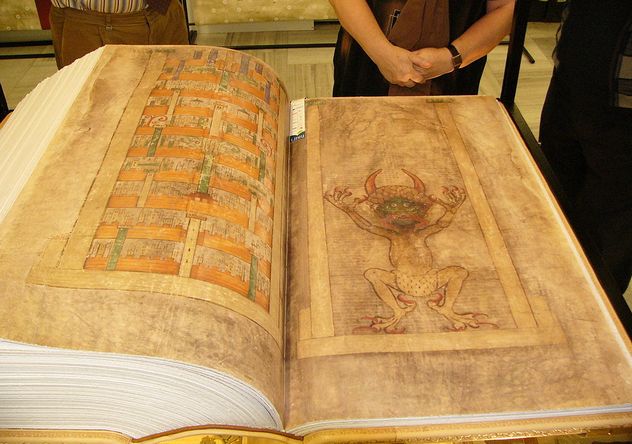
The largest known ancient manuscript is the Codex Gigas, more famously called “the Devil’s Bible” due to a full-page illustration of the Devil himself and the legends that swirl around the book. It takes two people to lift the book, which is made of more than 160 animal skins. It was written in the 13th century A.D., and it currently resides in the National Library in Stockholm, Sweden. You can view it here.
Legend has it that the Codex Gigas was written by a monk who made a deal with the Devil after being sentenced to death by being walled in alive. With the Devil’s aid, the monk wrote the book in a single night (the portrait was painted by the Devil himself). Oddly enough, the handwriting in the book is remarkably even and stable throughout, as if it really was written within a short period of time. However, it would take at least an estimated five years of nonstop labor to write the work, and most scholars believe it took about 30 years. Besides, wouldn’t you use the Devil to help you get out of the wall instead of writing a book?
At first glance, the contents of this bizarre book are equally strange. It contains a full Latin Vulgate Bible, interspaced with several other books, including Antiquities of the Jews by Flavius Josephus, a collection of medical works by Hippocrates and Theophilus, The Chronicle of Bohemia by Cosmas of Prague, the Encyclopedia Etymologiae by Isidore of Seville, and other, smaller texts. The latter works include a text on exorcism, magical formulas, and an illustration of the heavenly city.
Today, it seems bizarre to us why a manuscript would have such disparate texts, but it’s important to understand that a monk would often confine himself to a desk as a form of penance, spending his lifetime copying important or interesting works. Multiple-work manuscripts were common due to materials being rare, making it an imperative to use all available space. The discipline and craftsmanship of such an undertaking is a skill that rarely exists these days. Modern scholars believe that the Codex Gigas originally came from the Benedictine monastery of Podlazice (in the modern Czech Republic) and that it was taken as spoils by the Swedish army in the Thirty Years’ War.
8The Rongorongo Writing
Easter Island
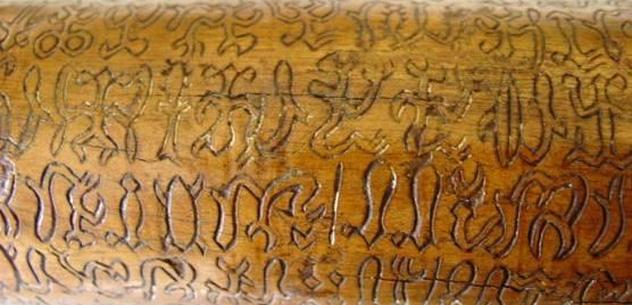
Almost everyone is aware of the famous Moai statues of Easter Island, but there are other artifacts associated with the place that also have unanswered questions surrounding them. First recorded by Catholic missionary Eugene Eyraud just after 1864, a total of 24 wooden carvings have been found, all containing a system of glyphs, dubbed “rongorongo glyphs,” which are believed to be writing or a form of proto-writing.
To date, nobody has been able to definitively decipher them despite several attempts and the possible identification of calendric and genealogical information. If the glyphs do turn out to be writing, they may represent one of only three or four times in human history that writing was invented independently. Some scholars believe that deciphering the glyphs may provide answers as to why the early civilization of Easter Island collapsed. Others believe the glyphs are not true writing at all but serve as memory aids or are purely decorative.
The script may have been in use as late as the 1860s and might have been influenced by early Spanish explorers. Whatever its origins, it quickly fell out of use through a combination of plague introduced by the explorers and Easter Islanders switching to Spanish after the missionaries arrived. Some scholars believe that only the village elders or religious elders made use of the script, which could help explain the swiftness of its disappearance.
7Gobekli Tepe
Turkey
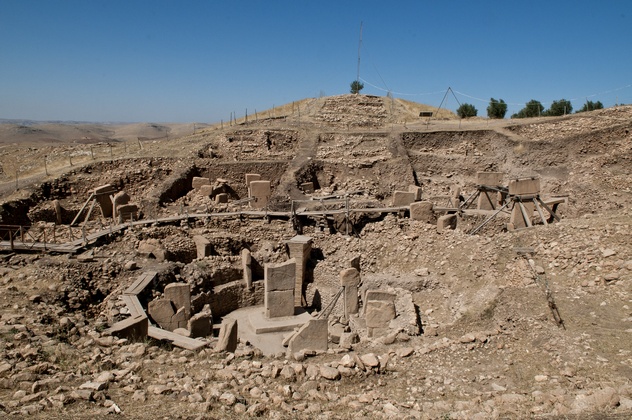
Conventional archaeological thought maintains that organized religion—the building of temples and the development of elaborate rituals—was a by-product of human settlement. As humans settled down into agricultural societies, they had enough leisure time to build upon folk religion and to start more ambitious construction projects. Then archaeologists discovered Gobekli Tepe. Located in the Urfa plain of southeast Turkey, near one of the most fought-over regions on Earth, is a temple whose ruins may be the oldest organized place of worship known to man. Gobekli Tepe (“Potbelly Hill,” after the mound it was buried under) was discovered by Klaus Schmidt in the mid-1990s and dates back to as far as 9500 B.C., about 5,000 years before Stonehenge. If accurate, this places it in a time before even pottery was invented in the Fertile Crescent, when people were still living in mostly nomadic cultures. The sites are mainly constructed of Stonehenge-like massive limestone slabs covered in elaborate animal carvings. Nobody knows how they were moved to their present locations.
Schmidt (who died in 2014) and his successor, Lee Clare, believed that the ruins were religious and served as a site for rituals—long before most archaeologists think that fixed, organized religious activity took place—and that they were built by the hunter-gatherer cultures that lived at the time, overturning the conventional timeline of religious evolution. They noted that the sites showed no evidence of habitation and were continuously maintained, with older sites buried and new ones constructed to take their place.
But others have contested this conclusion. Canadian anthropologist E.B. Banning contends that, far from being nomadic, the site served as an early home for some of the first settlers of the region. She points out that the idea of separating religious spaces from more ordinary ones (like homes) is a Western conceit that the ancient Near East did not share at the time. Her paper notes that there is nothing about the characteristics of the structures that explicitly rules them out as being homes and that nearby ruins also share traits that mix “sacred” elements with domestic purposes. Domestic artifacts such as portable mortars and stone bowls could also indicate that people did reside there. And while the inhabitants may not have been full-time farmers yet, sickles and other items found around the site could indicate that they had begun to cultivate plants.
6Roman Dodecahedrons
Roman Empire
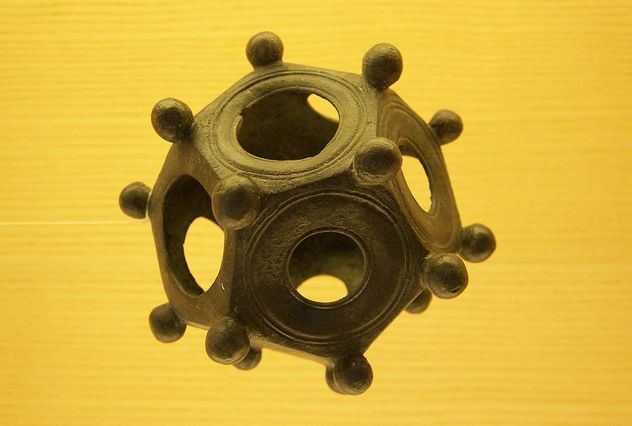
Throughout the regions that were once within the sphere of influence of the Roman Empire, from Wales to the Mediterranean, about 100 small, strangely shaped objects have been found and are, to this day, completely unexplained. Called “dodecahedrons” after their shape, each one is a hollow stone or bronze object, 4–12 centimeters (1.5–5 in) in diameter, with 12 flat pentagonal faces and holes of varying sizes on each face. Small knobs protrude from each corner. While the Romans were usually meticulous about keeping written records about everything they did, nobody has ever found a definitive account of these objects. The closest we have is Plutarch, who reportedly thought they were some kind of zodiacal instruments.
Some people think they were instruments of war. Others believe they had religious or astronomical significance, since many have been found in temples. A popular hypothesis is that they were used to measure the optimal sowing time for winter grain. Still others believe they were candlestick holders or children’s toys, and one man even thinks they were an aid for knitting gloves. Whatever they were, the dodecahedrons were a fairly common object throughout the Roman Empire. Until we find some written record or discover one within a context that establishes its use, these bizarre puzzle-boxes will remain a mystery.
5Fulachtai Fia
Ireland

Throughout the waterways and marshes of Ireland are found nearly 6,000 mysterious artifacts known as fulachtai fia (plural), dating back to the Middle Bronze Age (1800 B.C.). They are called “burnt mounds” in the UK, where they are also found.
A fulacht fiadh (singular) is a horseshoe-shaped mound of soil and stone surrounding a depression large enough to park a car on. A trough is dug in the center, self-filling with water at certain times from either the water table or from springs found just beneath. The fulachtai fia are usually found alone, but sometimes in groups of two to six and always near a water source. Evidence of heat-cracking around the stones indicates that there may have been hearths of some sort attached to the mounds. They are also usually found far from settlements, meaning it would take some effort to get to them.
That’s about all we know about them for sure. People have proposed that they were used for cooking by hunting expeditions or perhaps for textile production. Others think they may be breweries or that they were used as saunas or sweathouses, but as of yet, no conclusive answers have been found. It’s possible that fulachtai fia had multiple uses.
4The Bolshoi Zayatsky Labyrinths
Russia
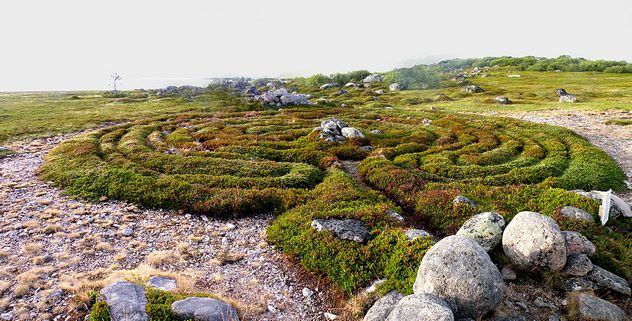
The Bolshoi Zayatsky Island, part of the Solovetsky archipelago in northern Russia, is home to yet another mystery. Prehistoric residents from as far back as 3000 B.C. used the island to build villages and sacred sites, including an irrigation system. They also covered Bolshoi Zayatsky and some of the surrounding islands in large piles of boulders containing bones, petroglyphs, and places of worship. Most tantalizing of all, they constructed mysterious stone labyrinths. But next to nothing is known about these people or their way of life.
The largest labyrinth is 24 meters (79 ft) in diameter, and most of them have a spiral shape (some with a double spiral resembling two serpents with their heads in the middle facing other). The structures are built of two rows of boulders overgrown with vegetation. There are 13–14 of them on the island itself, with about 35 in total.
What they were used for is unknown, but some archaeologists believe that they represented a border between our world and the underworld or were used ritualistically to help the dead pass from this life to the next. Labyrinths are a rare archaeological find, with only 300 known worldwide. The ones in and around Bolshoi Zayatsky are some of the best preserved in the world.
3Witch Bottles
Europe And The United States
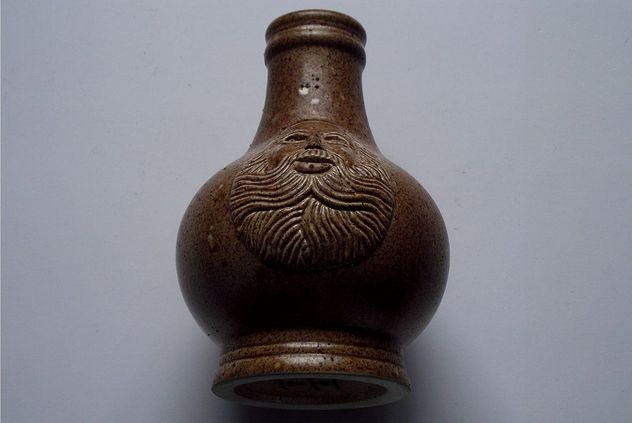
In 2014, archaeologists digging at the site of the Civil War Centre in Nottinghamshire made a bizarre discovery: a 15-centimeter (5.9 in) green glass bottle probably used as a “witch bottle.” Witch bottles grew out of the witchcraft scares in Europe and America in the late 1600s and 1700s. They were usually made of stoneware or glass, although inkwells and candlesticks were also converted for the purpose. About 200 of these objects have been found, and they often contained some combination of pins, needles, nails, fingernails, hair, and even urine. They were believed to protect the owner against the evil spells and malign influence of witches.
First mentioned in Saducismus triumphatus: or, Full and plain evidence concerning witches and apparitions by Joseph Glanvill in 1681, they were buried or installed in houses in great secrecy. Because that secrecy was a part of the ritual that surrounded witch bottles and similar artifacts, there is a striking lack of documentation on them despite their widespread use all the way up to the mid-20th century. Other objects that were used to protect people from witchcraft included skulls, horseshoes, concealed shoes, brooms, and mummified cats, to name a few.
2The Ubaid Lizardmen
Iraq
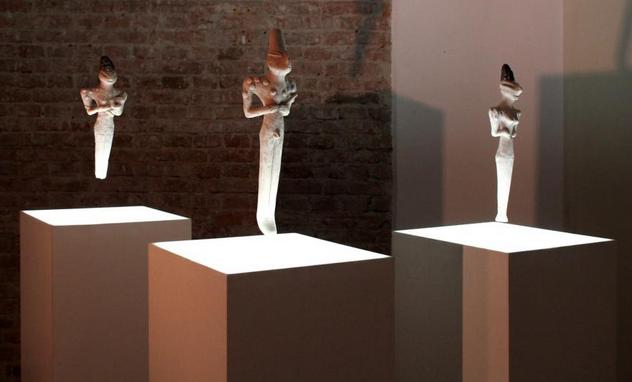
Among the more famous artifacts on this list are the Ubaid statues of Iraq, mostly found in Tell Al’Ubaid but also in Ur and Eridu. They come from a pre-Sumerian people—the Ubaidians. These hand-sized statuettes usually depict lizard- or snakelike people in various informal poses, such as holding and suckling a baby. Others are portrayed wearing shoulder padding or armor and holding staffs or scepters. It is the elongated heads and almond-shaped eyes that lend the figurines their reptilian appearance, leading many to believe that they depict serpent-related gods. Stranger theories conjure up extraterrestrials or an unknown reptilian race that may or may not still exist, as we have already touched upon.
However, most archaeologists believe that the figures served a more mundane purpose, and some even question whether they depict anything reptilian at all. The Ubaid society was known to practice skull modification—whereby the skull was manipulated from an early age to deform its shape—which would explain the heads. The almond-shaped eyes are a fairly common early stylistic rendering of Asiatic features, and less pronounced examples have earlier been found around the region.
A lack of contextual information surrounding the sites where the figures were unearthed makes it hard to establish their purpose. Many of the figures were found buried with individuals yet also seemed to have held a purpose during the owner’s life. Because not everyone had a figurine, most archaeologists tend to believe that they marked some form of status. Additional clues include the similarity of their features and the general age-group of the figures’ owners (mostly young adults). The owners may have been teachers, shamans, or priests of some kind.
1Rat Kings

Several museums around the world contain bizarre once-living artifacts of a pseudo-legendary beast from the Middle Ages called a “rat king.” A rat king is formed when several rats have their tails fused together, whether by knotting or being somehow glued together. The result is a small horde of rats all facing outward from the central knot, presumably forced to act as one composite beast. The more fanciful accounts hold that one leader rat is suspended in the middle and acts as the “head” who directs the rest—a nightmarish notion, especially considering the fears of plague that rats conjure up.
The largest of these disturbing artifacts contains 32 of the little horrors and resides at the Mauritianum Museum in Altenburg, Germany. Some existing rat kings are mummified, while others are preserved in jars. Rat kings have been found in Germany, France, Poland, the Netherlands, Belgium, and Indonesia. In every case except Indonesia, the rats were black: Rattus rattus L. In the case of Indonesia, they were small field rats: R. argentiventer.
As recently as 2005, a farmer named Rein Koiv found a rat king consisting of 16 individuals (nine of which were already dead) underneath the floorboards of his farm in Estonia, their tails glued together by frozen sand. Rat kings aren’t always composed of rats; mice kings and even squirrel kings have also been reported. In June 2013, an animal clinic in Canada received quite a shock when a city worker brought in six squirrels fused to each other’s tails by tree sap. They managed to save the plucky squirrels—their tails were partially shaved but they were otherwise intact.
Lance LeClaire is a freelance artist and writer. He writes on subjects ranging from science and skepticism, atheism, and religious history and issues, to unexplained mysteries and historical oddities, among other subjects. You can look him up on Facebook, or keep an eye out for his articles on Listverse.




